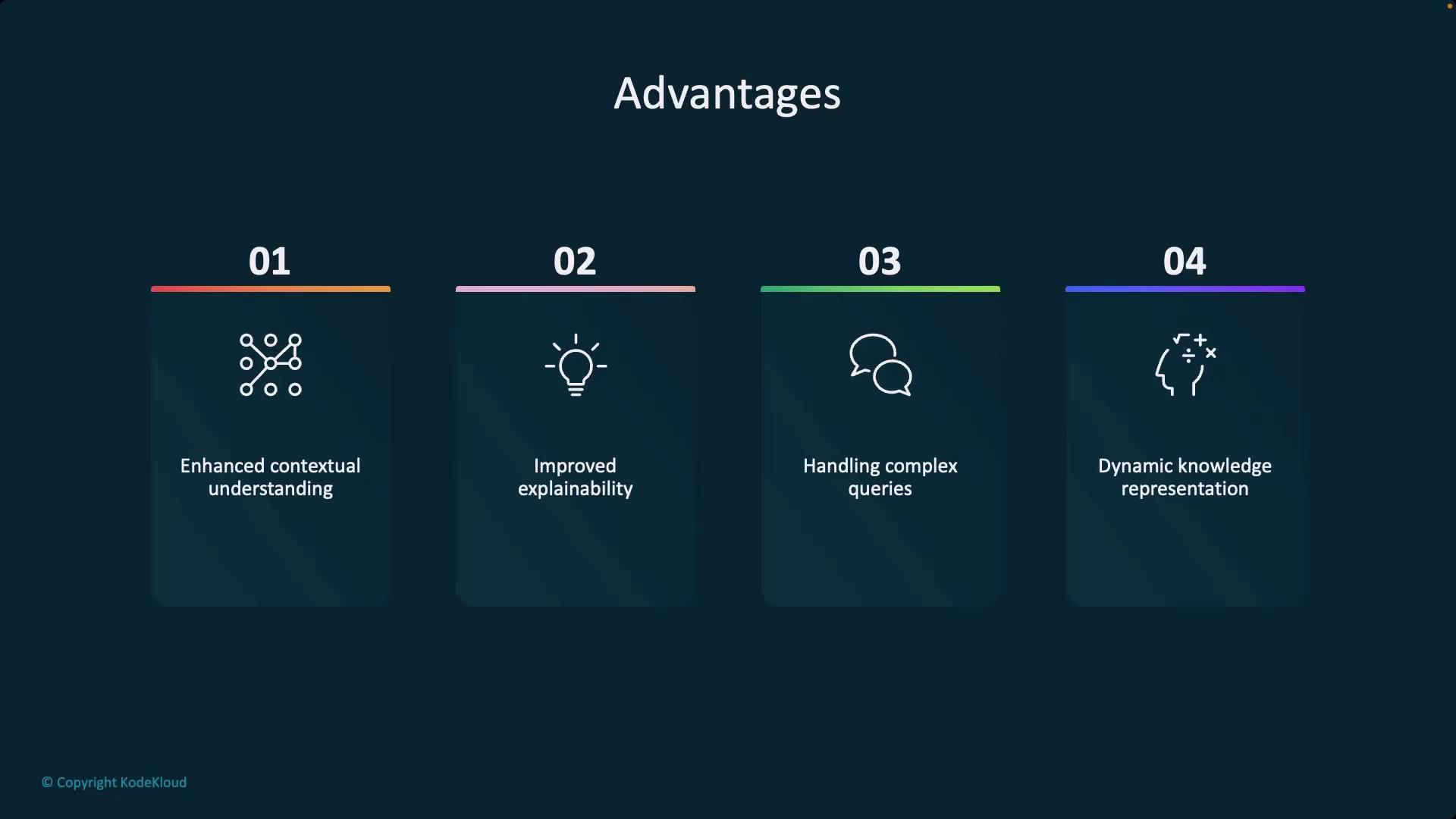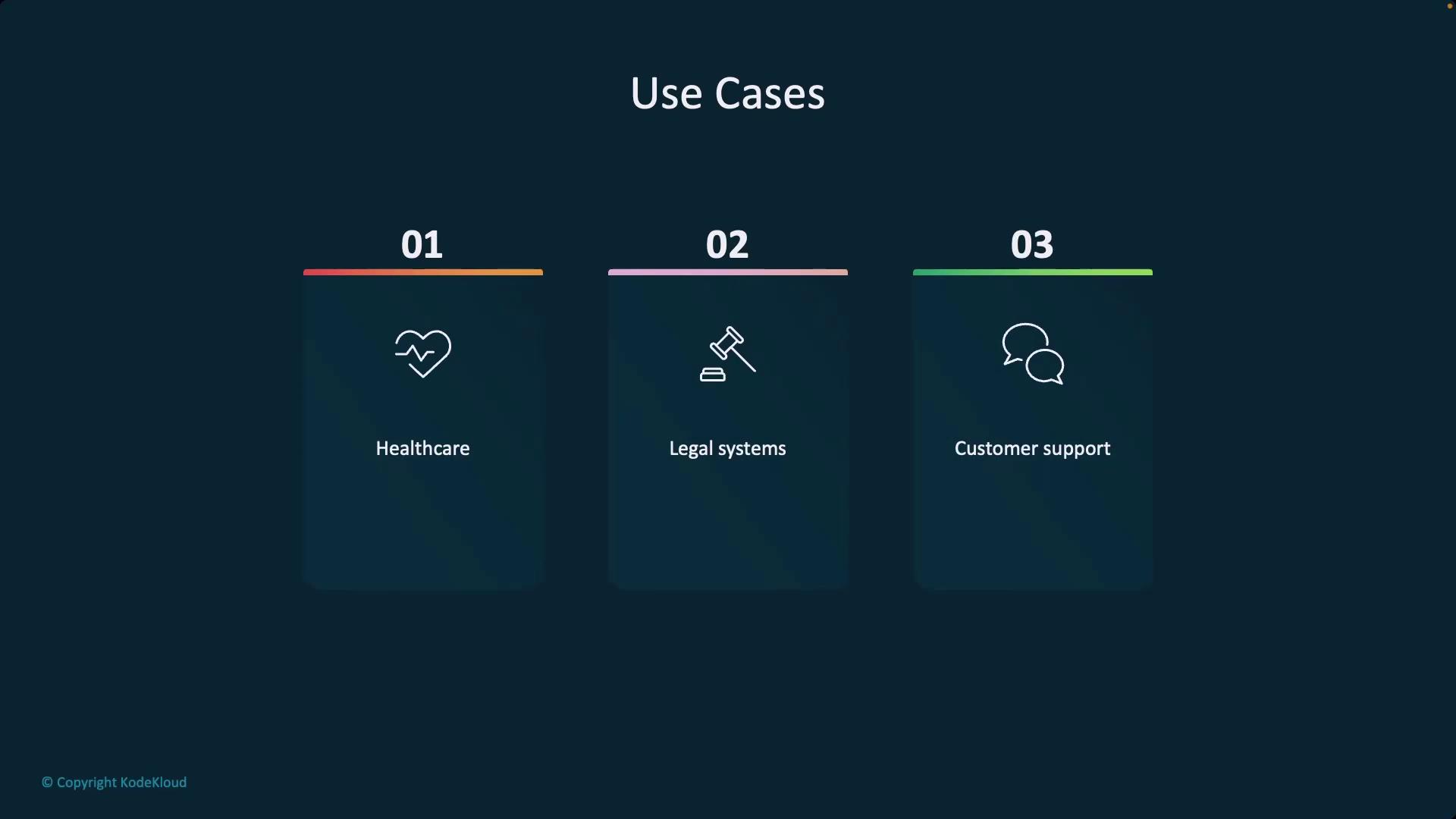Generative AI in Practice: Advanced Insights and Operations
Retrieval Augmented Generation RAG
Graph RAG
In this article, we explore how graph databases and large language models (LLMs) work together to enhance knowledge retrieval systems. Graph databases have been effectively used for years, but with the advent of models like GPT-4, semantic connections that were once manually constructed can now be generated automatically. This breakthrough opens up new avenues in retrieval models.
Evolution of Retrieval-Augmented Generation (RAG)
Retrieval-Augmented Generation systems have rapidly evolved:
- In a basic RAG setup, simple vector similarity is used for retrieval.
- Advanced RAG techniques, without graph structures, employ enhanced vector methods such as hybrid retrieval.
- Graph-RAG takes it a step further by integrating entity and relationship connections into a graph-based retrieval system. Each knowledge graph—often consisting of interconnected subgraphs—integrates nodes, entities, and their relationships to offer a more holistic context. This interconnected framework is essential for organizations managing vast datasets with limited internal links and is particularly useful for complex query processing, enhanced analysis, and better explainability through data source visualizations.
Note
Graph-RAG not only improves retrieval accuracy but also offers a visual interface, allowing humans to validate and challenge data connections intuitively.

Advantages and Challenges
Advantages
Graph-based retrieval offers several key benefits:
| Advantage | Description |
|---|---|
| Enhanced Contextual Understanding | Provides a comprehensive, interconnected perspective of data. |
| Improved Explainability | Enables visual validation and interpretation of data source connections. |
| Handling Complex Queries | Facilitates the processing of intricate queries through interconnected relationship mapping. |
| Dynamic Knowledge Representation | Updates in real-time, allowing for ongoing validation and refinement of data insights. |
Challenges
Implementing graph databases has its own set of challenges:
- It can be complex and resource-intensive, requiring stringent data quality control.
- In environments with extensive document collections, PDFs, and rapidly evolving data, maintaining accurate graph connections necessitates continuous human oversight.
For organizations planning for the future, adopting Graph-RAG could unlock innovative, real-time retrieval capabilities possibly as soon as late 2024 or 2025.
Integrating Real-Time Data with LLMs
In addition to graph enhancements, real-time data integration into RAG systems addresses the limitations of static retrieval methods. By incorporating techniques such as:
- Query rewriting
- Embedding fine-tuning
- Dynamic embeddings
- Re-ranking and hybrid search
...advanced RAG systems can retrieve and validate data more effectively. Graph databases enrich these techniques by offering a grounded representation of data connections, enabling both visual and analytical validation.

Looking Ahead
The next segment will demonstrate the deployment—or exploration of a near-enterprise level—Retrieval-Augmented Generation system. This practical session will showcase how the discussed concepts converge to form a robust, real-time data integration framework.

Thank you for exploring the potential of Graph-RAG with us. We hope this article has provided clear insights into how graph databases and LLMs can synergize to create more dynamic, explainable, and capable systems for handling complex queries in modern data environments.
Watch Video
Watch video content